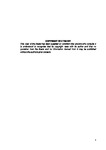OPTIMISATION OF SHOT PEENING FOR 12Cr STEEL IN STEAM TURBINE BLADE APPLICATIONS
| dc.contributor.supervisor | James, Neil | |
| dc.contributor.author | Newby, Mark | |
| dc.contributor.other | Faculty of Science and Engineering | en_US |
| dc.date.accessioned | 2013-06-07T08:29:51Z | |
| dc.date.available | 2013-06-07T08:29:51Z | |
| dc.date.issued | 2013 | |
| dc.date.issued | 2013 | |
| dc.identifier | 390439 | en_US |
| dc.identifier.uri | http://hdl.handle.net/10026.1/1493 | |
| dc.description.abstract |
Power generation in thermal stations typically relies on large steam turbines. The corrosion resistant steel blades used in the last stage of a typical low pressure rotor set are approximately 1m long and experience high centrifugal loading during service. They operate in a wet steam environment, at approximately 60°C while rotating at 3000rpm, and failure modes include high and low cycle fatigue, stress corrosion cracking or corrosion fatigue. The blades are retained by a fir tree root which is normally shot-peened to generate compressive residual stresses that resist crack initiation. Finite element (FE) modelling has indicated that, in the absence of shot-peening, stresses above yield are induced at the fir tree root during operation. In a shot-peened blade these lead to relaxation of the shot peening residual stresses. To date, no systematic information has been obtained on the level of residual stresses induced in the fir tree by shot-peening and their subsequent relaxation during service loading, nor are there any guidelines as to the magnitude of residual stresses necessary to ensure integrity of the turbine over a life span of at least twenty years. At least one of these blades has suffered catastrophic failure in recent years causing severe damage, in excess of €100M, to the turbine-generator set on a South African power station [1]. This thesis reports results from a comprehensive program of residual stress measurements at the shot-peened fir tree roots of service blades, and in specimens that simulate the root conditions, using diffraction data from laboratory and synchrotron X-ray radiation (SXRD). Shot-peening coverage between 75% and 200% was used and stresses were measured over a depth of 5mm into the blades/specimens. Measurements were made in the as-peened condition and after applying cyclic stresses representative of overspeed proof testing and of service operation. The results were used to calibrate FE modelling of residual stresses and as input into fatigue life prediction. | en_US |
| dc.language.iso | en | en_US |
| dc.publisher | University of Plymouth | en_US |
| dc.subject | Residual stresses | |
| dc.subject | Turbine blades | |
| dc.subject | Fatigue | |
| dc.subject | Shot-peening | |
| dc.subject | X-ray diffraction | en_US |
| dc.title | OPTIMISATION OF SHOT PEENING FOR 12Cr STEEL IN STEAM TURBINE BLADE APPLICATIONS | en_US |
| dc.type | Thesis | |
| plymouth.version | Full version | en_US |
| dc.identifier.doi | http://dx.doi.org/10.24382/4544 |
Files in this item
This item appears in the following Collection(s)
-
01 Research Theses Main Collection
Research Theses Main


